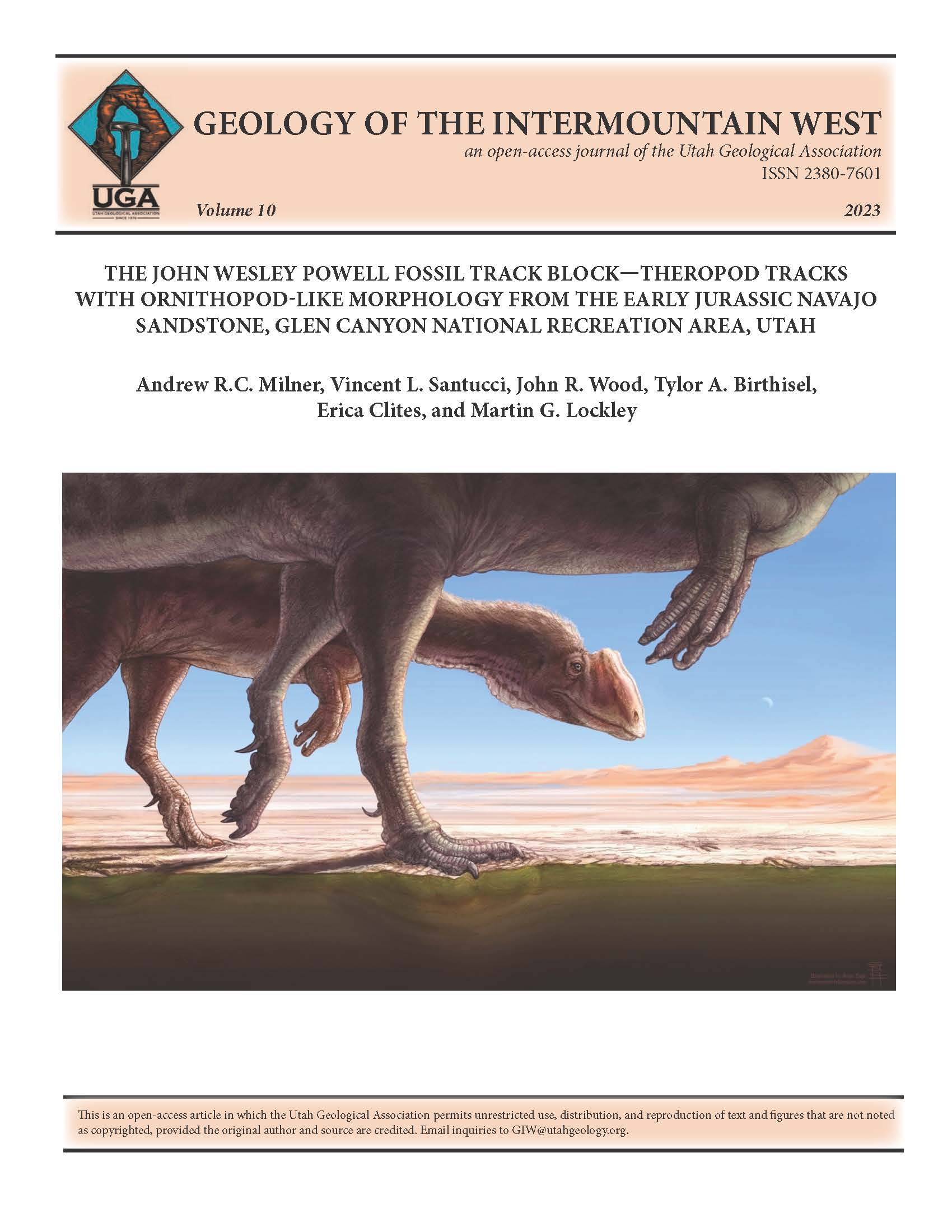The John Wesley Powell Fossil Track Block—theropod tracks with ornithopod-like morphology from the Early Jurassic Navajo Sandstone, Glen Canyon National Recreation Area, Utah-Arizona
Abstract
A large fallen block of Early Jurassic Navajo Sandstone located at Lake Powell, within Glen Canyon National Recreation Area, south-central Utah, displays natural casts of vertebrate tracks. The footprints occur on at least three track-bearing horizons preserved on and between stromatolitic sandstone beds. Two large, parallel trackways, plus a third, divergent trackway, on the main track layer (MTL) superficially resemble ornithopod footprints; however, they were produced by large-sized theropod dinosaurs, rather
than ornithischians, and we identify these as Eubrontes.
Small coelophysoid theropod tracks (Grallator) are the most common vertebrate ichnofossils on all track-bearing horizons, with approximately 50 footprints preserved on the MTL, six on the highest surface, and three on thinner float slabs stratigraphically lower in section. An additional 12 tracks in three trackways of Anchisauripus size occur on the MTL, but they superficially resemble Kayentapus in having wider divarication angles than typical Anchisauripus. The MTL also preserves at least five closely associated tetradactyl footprints that we identify as cf. Brasilichnium. A nearby, smaller fallen block preserves distinct Batrachopus tracks, which are rare in eolian environments.
The microbial (possibly endoevaporitic) mats and stromatolitic horizons on which the animals had walked produced a distinct ichnomorphologic variation because of substrate consistency and the elastic properties of the mats, resulting in differential compaction of the bedding surfaces. Lithic compaction of the finer-grained sediments between denser, more resistant sandstone beds pre- and/or post-lithification resulted in additional deformation of the tracks, followed by natural erosion. We interpret these natural cast footprints on the MTL as possible transmitted tracks. The track-bearing, microbial-mat surfaces represent interdunal pooling of water, probably during periods of increased precipitation and/or rising water tables during wet seasons.





